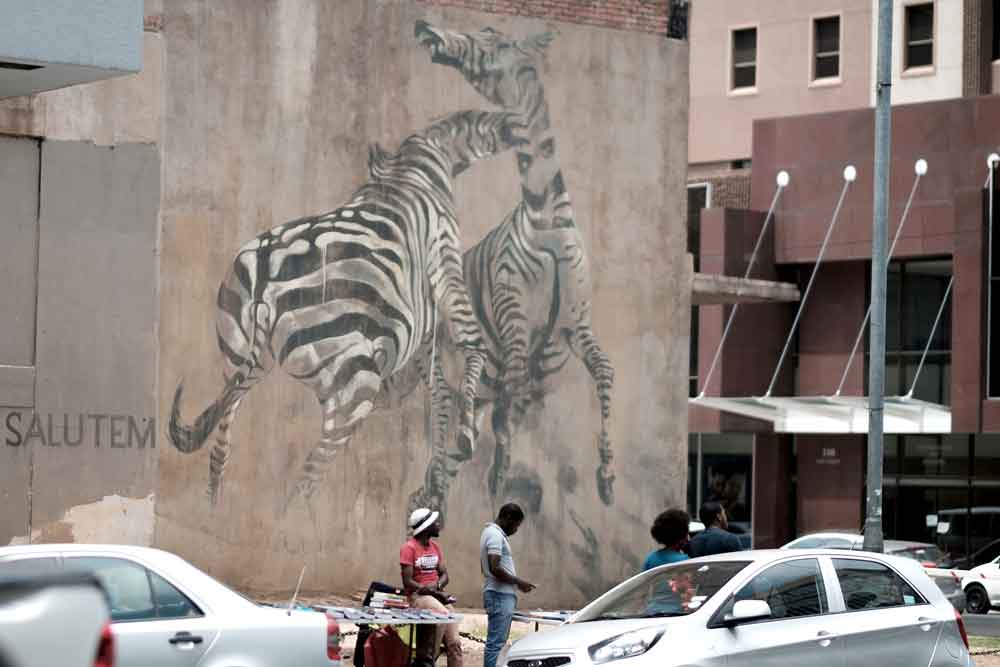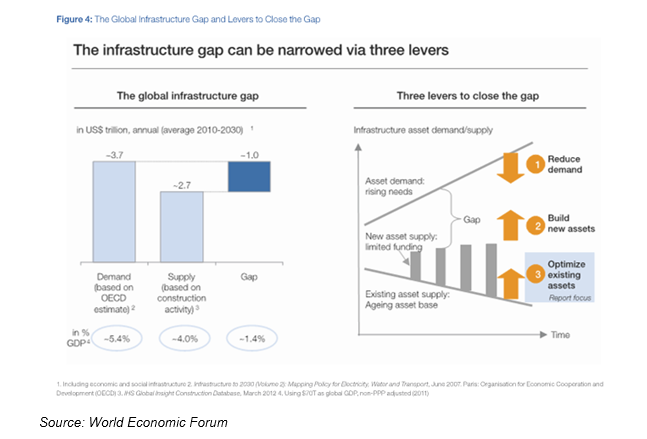
Addressing the infrastructure gap in fast-growing countries
According to the United Nations, more than half of the global population growth between now and 2050 is expected to occur in Africa. It is crucial, therefore, that we start to better manage our assets to support this trend on our continent.

“With World Population Day being celebrated on 11 July 2019, it is a good time to reflect on the infrastructure availability across the continent. Last year, South African Finance Minister Tito Mboweni identified infrastructure delivery as a key enabler of economic growth. As asset management experts, we need to start looking at how we will accommodate the population of the future,” says Francois Joubert, Aurecon’s Africa Lead, Asset Management.
A 2014 report by the World Economic Forum entitled Strategic Infrastructure: Steps to Operate and Maintain Infrastructure Efficiently and Effectively said that a country’s competitive economic advantage clearly depends on a properly articulated infrastructure vision and long-term planning, and it is particularly important in the fastest growing populations, namely those of Africa and Asia.
The infrastructure challenges that fast-growing countries face
There are a number of infrastructure challenges that countries with fast-growing populations face, says Joubert, including the slow speed with which infrastructure is provided.
“The lead time for infrastructure projects can’t keep up with the real-time rise in demand. Other challenges include predicting where the infrastructure will be needed; damage to existing infrastructure due to overuse, such as gridlocked roads that weren’t designed for the traffic they have to accommodate; as well as servicing informal settlements. In South Africa in particular,
informal settlements are established in response to desperate need, and it is then very costly to retrofit infrastructure into them,” says Joubert. In addition, the recently released Auditor-General’s report for Local Government (2017-2018) also highlights the development of maintenance plans and policies, and asset condition assessments as challenges in optimising the management of current asset portfolios.
Closing the infrastructure gap in SA
Joubert believes the assets that will be needed the most in South Africa in the future include water and sanitation, electricity, roads, education, and health infrastructure.
“South Africa has a significant infrastructure backlog due to historic policies, which is exacerbated by forces such as slow economic growth and under-employment. We currently have an ‘infrastructure gap’, which is the difference between what is required to provide a minimum acceptable level of service and what is currently available,” says Joubert.

The figure in the World Economic Forum’s report shows that governments can reduce infrastructure demand, build new assets or optimise existing infrastructure assets.
“In some cases, demand can be reduced if a public service can be satisfied in another way. Electricity consumption, for example, can be reduced through energy-saving initiatives. But a service such as transport can’t be reduced to support a rising population without jeopardising economic and social development,” explains Joubert.
The second option, to build new assets, is resource intensive and unappealing in a climate of tight fiscal budgets and limited private investing.
“Several asset management best practice documents, such as Publicly Available Specification 55, the ISO55001 Standard, and the South African National Treasury’s Cities’ Infrastructure Delivery Management System highlight the importance of prolonging the life of existing infrastructure. As infrastructure advisory experts, we are focused on helping clients maximise the utility of existing assets,” says Joubert.
This third option is an underexploited opportunity to optimise existing assets by making them more effective, cheaper or longer lasting. While this approach has often been neglected by policy-makers in the past, it is increasingly commanding attention in the current context of ageing facilities, rising demand, and constrained finances.
Joubert says that government needs to prioritise its infrastructure spend and look at ways to maximise the utility of existing assets.
“There is not enough budget to build everything required, so government will need to spend the limited maintenance and capital budgets on infrastructure that will maximise their returns. There are several ways that the utility of assets can be maximised, including using buildings for greater parts of the day, such as a school building that can double for other needs after school hours; mixed-use developments, such as combining office and retail, which are open during work hours, with residential, which is only used outside of working hours. Communities should be involved in infrastructure decisions and user-based consultations need to take place, preferably in the form of a design-led thinking workshop or consultation process,” says Joubert.
Government will need to invest in proper master plans and asset management strategies in order for this to be effective, and Aurecon can assist with risk-based analysis and trade-offs among various infrastructure investments to ensure the desired return on investment is achieved.
Johan de la Rey, Aurecon Principal, Capital Project Assurance, says that Aurecon can help by providing clients with the assurance they need in regard to effective delivery of infrastructure projects on time and cost, through independent assessment of governance, risk management and critical project controls.
“Our team takes a deep dive into the critical controls (schedule, cost, contract, scope, financial, etc.) of projects to make sure that capital intensive projects set out to achieve what they were intended to, or to provide early warning that the programme or project is not on track to achieve specified milestones. Given limited capital budget availability, we help clients get the most out of capital programmes by optimising their existing investment spend and consequently their asset base,” comments de la Rey.
About Us
Aurecon is an engineering and infrastructure advisory company, but not as you know it. We’ve reimagined engineering.
Our clients’ ideas and aspirations drive all that we do. We work alongside them like no other firm to co-create clever, innovative solutions to some of the world’s most complex challenges, adding value across the project lifecycle through deep technical and advisory expertise. We serve our clients across a range of markets, in locations worldwide. Hardwired in our DNA are engineering, design and the deep need to leave a legacy. We are as diverse as we are dynamic. As curious as we are clever.
Drawing on our deep pool of knowledge, we bring vital engineering experience, technical capability and design expertise to the table. Then we listen deeply and intently. We see the opportunities, possibilities and potential that others don’t. Through a range of unique creative processes and skills, we collaborate with our clients to re-imagine, shape and design a better future.
We believe humanity depends on engineering; and we recognise we have a broader stewardship role to play. A deep responsibility to hold. As we continually strive for a life in balance, Aurecon clients will be both future ready and engineered for life.
Think engineering. Think again.
Aurecon: Engineering, re-imagined.
To find out more about what we have been up to visit our newsroom, or take a glimpse into the future on our Just Imagine blog.
Privately owned by employees, Aurecon formed in 2009 when Africon, Connell Wagner and Ninham Shand announced the formation of a new global group.
Please visit www.aurecongroup.com for further information.
Contacts
Danielle Bond
Head of Marketing & Communications, Aurecon
Danielle.Bond@aurecongroup.comPhone: +61 3 99753138 Mobile: +61 412870987
Links